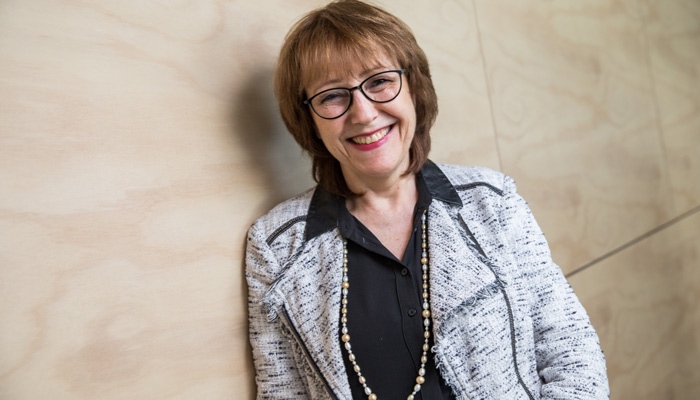Future of work is about humans, not robots
Future of work is about humans, not robots
Here's why people, not robots, present the biggest challenge to offices of the future
Author: Fran Molloy
17 September 2018
There’s growing awareness that one person’s light-hearted humour can be another person’s hurtful insults; and organisations that don’t address and ideally pre-empt workplace tensions sensitively could find themselves in all kinds of hot water.
From robot workers to artificial intelligence, 3D immersive videoconferencing and interactive smart rooms, most discussions about the workplace of the future focus excitedly on the potential for emerging technology to change the way we work.

People matter: Issues of gender, culture and age must be catered for in the workplace, says Professor Taksa.
“There’s way too much emphasis on AI and automation — and not enough recognition of some of the critical issues that currently affect the way people interact in the workplace, issues that will continue to plague us unless serious action is taken,” says Professor Lucy Taksa, co-Director of Macquarie's Centre for Workforce Futures.
“The future of work is already here,” she adds. “The issues around managing diversity and power in the workplace that exist today, will still need to be managed tomorrow.”
Today’s workplace managers already manage people with different cultural backgrounds and needs in flexible ways that suit their circumstances. As our workforce ages, and becomes more diverse, these pressures will intensify, she says.
In recent years, the #meToo movement and #OscarsSoWhite have wreaked turmoil in the multi trillion-dollar entertainment industry, and diversity is under the spotlight. But successful future workplaces will be those that manage these issues well rather than jump on a bandwagon.
Technology-based ‘solutions’ — such as online training — can lead to lip service being given to addressing differences, while ignoring the everyday issues relating to difference that can contribute to serious workplace tensions, causing problems for both employees and managers, Taksa says.
She says that the needs and concerns of the wide range of people of different genders, cultures, ages and other differences in our workplaces must be catered for, so they can be productive and so that their wellbeing is assured.
On the wrong track
Taksa is concerned that the approach to diversity management in some workplaces today puts a laser-focus on dealing with unconscious bias.
Some organisations have begun addressing unconscious bias to improve workplace diversity, for example by removing names and identifying characteristics in job applications. Many others are spending immense amounts on unconscious-bias training.
Numerous studies suggest that because unconscious-bias training implies that everyone has some bias, bias can become normalised and even reinforced. This focus on mental states is problematic since Australian anti-discrimination law does not focus on a person’s mental state, she says.
“A better approach to improving inter-cultural and gender relations and workplace diversity would be, to lift expectations about accepted standards of behaviour.”
Improving standards for future workers
Taksa points out that workplace health and safety anti-bullying laws, and anti-discrimination employment laws already focus on high standards of behaviour.
Issues that workplaces now grapple with include biases involved in recruitment, the awarding of performance bonuses, salary differentials and promotions.
“People who are responsible for decisions around pay and promotions should be held to a higher standard of behaviour, and there are known mechanisms to deal with such issues,” she adds.
Tomorrow’s workforce will still include a diverse mix of people that we need to provide work for and employ effectively, she says.
“If we don’t address the issues around workplace relationships now, then the future of work is going to replicate and exacerbate the problems that we have in workplaces today.”
Any exploration of the future workplace must take interpersonal relationships into account, she says.
One example where this is being addressed is at the Australian Human Rights Commission (AHRC), which recently held an international conference exploring the humanrights implications of artificial intelligence, big data and a host of new technologies.
The AHRC has also recently released a Human Rights and Technology Issues Paper to enable broad participation in the emergence of “a roadmap for responsible innovation in Australia".
Using the workforce past to understand the workforce future
Professor Taksa has held a range of executive roles in government and not-for-profit organisations and has been Associate Dean (Research) of Macquarie’s Faculty of Business and Economics since 2015.
Her PhD research explored ‘scientific management’ and its diffusion to Australia from the US. Scientific management focused on measurement of work activity and standardisation, and tried to ensure unitary workplace cultures.
Earlier in the 20th century, employees faced with this system of management feared being thrown on the scrap heap of unemployment at an early age because they couldn’t keep up with what they believed were unreasonable standards and targets, she says. Similar fears are evident today.
Although unemployment is low in Australia today, at 5.4 per cent, underemployment is high, at 8.5 per cent, and a rise in long-term unemployment for older workers co-incides with an ageing workforce.
These changes in workforce combine with unresolved inequities related to gender and cultural diversity.
Taksa says the next workforce challenge is helping people deal with the everyday experience of inter-cultural relations at work, where people have different communication styles, different values and assumptions.
